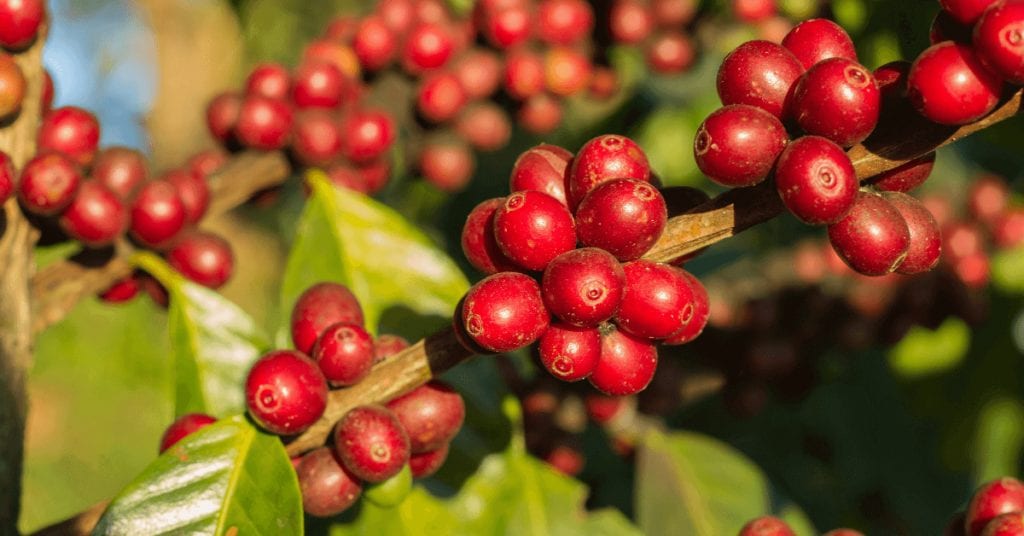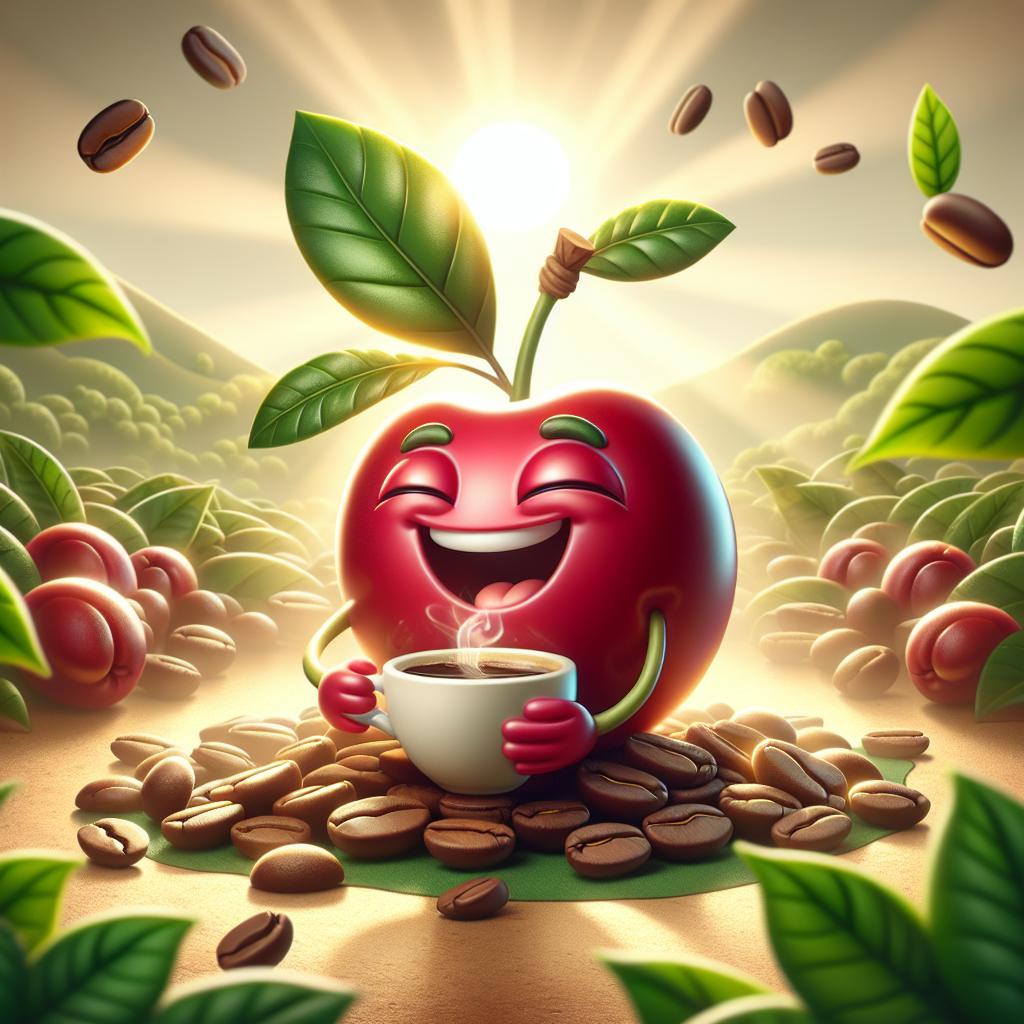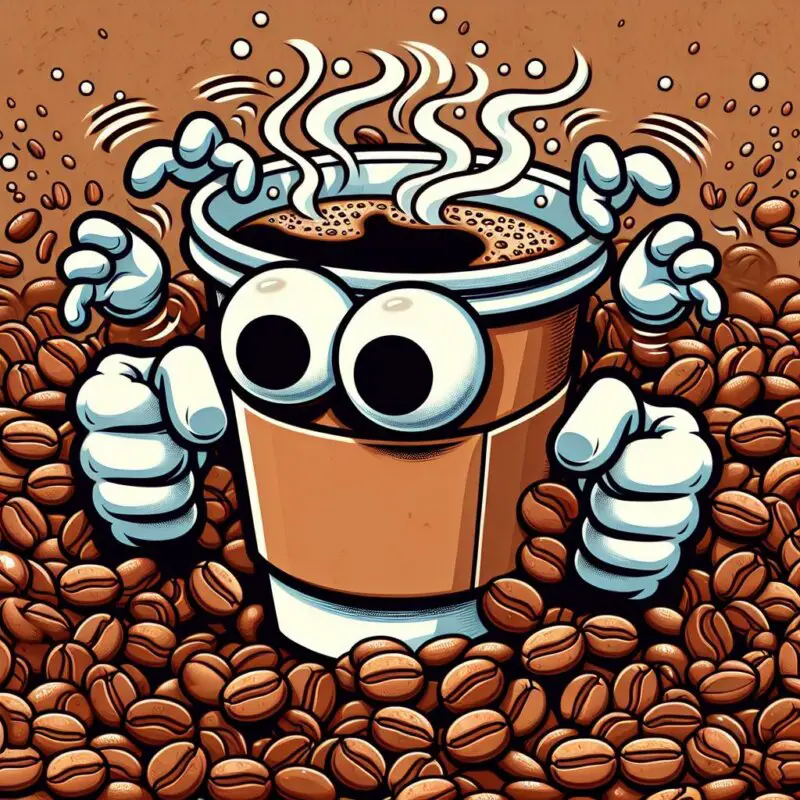This post may contain affiliate links. Please read my disclosure for more info.
Did you know your favorite coffee beans start as cherries? These cherries aren’t just for coffee; they’re also in teas, skincare, and even butter! Exciting, right?
I’m passionate about coffee and hate wasting food. So, discovering everything about the coffee cherry thrilled me! I’m eager to share this excitement with you. Let’s dive into the world of coffee cherries together!
Curious about coffee cherries? Discover their flavor and appearance, learn what becomes of them once the beans are extracted, and explore the creative products crafted from coffee cherries and their extracts. Dive in for an exciting journey!
Grab a cup of coffee, and we’ll jump right in.
Is Coffee Bean a Cherry?
Actually, the “coffee bean” is a seed from the coffee cherry. So, it’s not a bean, but a seed!

Did you know coffee comes from trees? But there’s more to it. Coffee trees bloom with white flowers that smell like jasmine. These flowers turn into coffee cherries, also known as coffee berries. At first, these cherries are green, but they change to pink or red when ripe. And guess what? These cherries are a type of stone fruit, similar to mangos, olives, and the regular cherries we all know. They’re actually called drupes.
Tucked inside coffee cherries, two beans snuggle up, flat sides together. These are the beans we end up drinking, but not before they’re roasted. This process transforms them from their original green to the rich browns we recognize in our coffee cups.
Do All Coffee Cherries Have Two Beans?
Not all coffee beans come in pairs. In fact, 10-15% of them are unique, called peaberries. These single, round beans get all the nutrients from the coffee cherry, making them richer and fuller. Imagine a bean that’s been feasting solo, soaking up all the goodness to deliver a special flavor in your cup.
I absolutely love talking about peaberry coffee beans! They’re unique because they pack a sweeter, richer flavor. This is thanks to the extra nutrients they get, being the only bean in the cherry. Some of the finest Sumatran and Kona coffees are peaberries. If you’ve never tried them, you’re missing out. Plus, they’re excellent for making espresso!
Are Coffee Berries Poisonous?
Wondering if coffee cherries are safe to eat? Good news – they’re totally edible and not harmful at all! Both people and many animals can enjoy them safely. Plus, they’re eaten in various ways, which we’ll dive into later in this article. Stay tuned to learn more about these fascinating fruits!
Be cautious: Coffee cherries pack more caffeine than the roasted beans we love. While it takes a lot to be harmful, it’s good to know, especially if you’re thinking of creating a new coffee cherry dish or drink. Check out more on caffeine levels here.
Do Coffee Cherries Taste Good?
Just because you can eat something doesn’t mean you should (sorry, summer squash!). Ever tried a coffee cherry? Imagine the sweet lovechild of an apricot and a watermelon. That’s them: deliciously sweet and oh-so refreshing.
Sounds tempting, doesn’t it? But there’s a catch. The fruits we enjoy today are modern, hybrid versions. They’re designed to be easy to eat, with big, sweet bites and fewer seeds. But if you try eating ancient fruits, the kind that hasn’t been tweaked for our taste buds, you might find them quite unappealing.
Coffee cherries might surprise you – they’re mostly skin and seeds! Imagine trying to peel a peach, but the soft part clings stubbornly to the pit. That’s how the pulp sticks to coffee beans. Plus, the skin is tough, way tougher than a cherry or peach’s skin. It’s a unique little fruit!
Health Benefits of Coffee Cherries
Coffee cherries are not just the start of your favorite brew; they’re a powerhouse of health benefits too! Thanks to their rich antioxidant and polyphenol content, they’re incredibly good for you. In fact, products made from coffee cherries, like coffee cherry tea and extracts, pack more of these healthy compounds than even blueberries or green tea, both famous for their antioxidant properties.
The Alzheimer’s Drug Discovery Foundation has put together an exciting report on the possible health perks of coffee cherries. Although it’s early days, research hints at their power to stop tumors from growing and protect the brain. Remember, these findings are still fresh, but it’s fascinating to see science unfold before our eyes.
What Are Coffee Cherries Used for?
Clearly, the heart of the coffee cherry is its beans, the star ingredient in our beloved coffee. However, the cherry’s pulp and skin also have their uses, though they’re not as popular. Unfortunately, because the beans are in such high demand, a lot of the pulp and skin ends up being wasted. This waste often contributes to pollution, as it gets washed away into waterways during the bean cleaning process.
After the coffee bean is taken out, the cherry parts aren’t just thrown away. Many small coffee farms creatively use these leftovers as fertilizer, to make tea, and for various other products.
Fertilizer
Some small coffee farms take the pulp off their cherries right where they grow. This leaves behind lots of organic stuff, which they turn into fertilizer for the next batch of coffee. These cherries are full of phosphorus, and when mixed with manure rich in nitrogen, they make great fertilizer.
Coffee cherry tea
Cascara, also known as coffee cherry tea, is catching the eye of many herbal tea fans. Unlike coffee, which is brewed from the cherry’s seeds, cascara is made from its skins. There’s even a “whole-fruit” version that includes the skins and pulp, but leaves out the bean. It’s a unique twist on a classic brew!
Peel off the skin from a coffee cherry, let it dry, and what do you get? Flaky bits that look like husks. Instead of calling them dried coffee cherry skins, we use a cooler name: cascara. Interestingly, this is also the name of the delicious drink made from them.
Dip dried coffee cherry skins in water, and they’ll infuse it with a unique taste, creating cascara. This isn’t your regular tea, as it skips the tea leaves. Strictly speaking, it’s a fruit tisane, but many simply call it herbal tea. Dive into this intriguing brew and explore a new side of coffee!
When coffee cherries are processed, most of the caffeine goes into the beans. However, the pulp and skin still hold a bit of caffeine. So, when you drink cascara, a tea made from these parts, you’re getting a caffeine kick similar to a regular black tea.
Just like coffee beans, cascara, which isn’t roasted, gets its unique taste from where it grows. Whether it’s fruity, floral, smoky, or earthy, each batch is a surprise! The magic happens both in the roasting of beans and the natural conditions of their birthplace. Dive into these flavors and discover your favorite!
Cascara syrup
In 2017, Starbucks introduced the world to cascara syrup with their delicious cascara latte. This syrup, crafted from the skins and pulp of coffee cherries and sweetened with cane sugar, quickly became a hit. It’s now a trendy addition to not just coffee, but also sparkling water and cocktails. Thanks to its high antioxidant content, cascara syrup is becoming a favored healthy alternative to other antioxidant-rich fruits like blueberries, acai, or pomegranate in various drinks.
Other products
Coffee cherry extracts are not just for your morning cup anymore! Packed with antioxidants, they’re popping up in health supplements and even skincare, thanks to their benefits and distinct aroma. Plus, innovative farmers are experimenting with them in tasty treats like chocolate, sorbet, and butter. It’s an exciting time for coffee lovers looking to explore beyond the brew!
Can Coffee Cherries Be Used for Animal Food?
Did you know that coffee cherries, despite being packed with caffeine, aren’t good for feeding animals? That’s because their high caffeine content can be harmful. While many leftovers from food production find their way into animal feed, the rules for what animals eat aren’t as tough as what humans can consume.
Adding coffee cherry to animal feed might sound like a clever idea, but there’s a catch. Animals would need to eat a lot of it for it to be worthwhile, and that means too much caffeine. Not good for their health. Plus, imagine how hyper they’d get! Farmers definitely wouldn’t be fans of that extra buzz.
Final Thoughts
The coffee cherry is a remarkable plant. Not only do its seeds give us our beloved coffee, but the pulp and skin have some really innovative and awesome uses too. It’s truly fascinating!





